3 min read
Scientist Discovered Why Most Traders Lose Money – 24 Surprising Statistics
“95% of all traders fail” is the most commonly used trading related statistic around the internet. But no research paper exists that proves this...
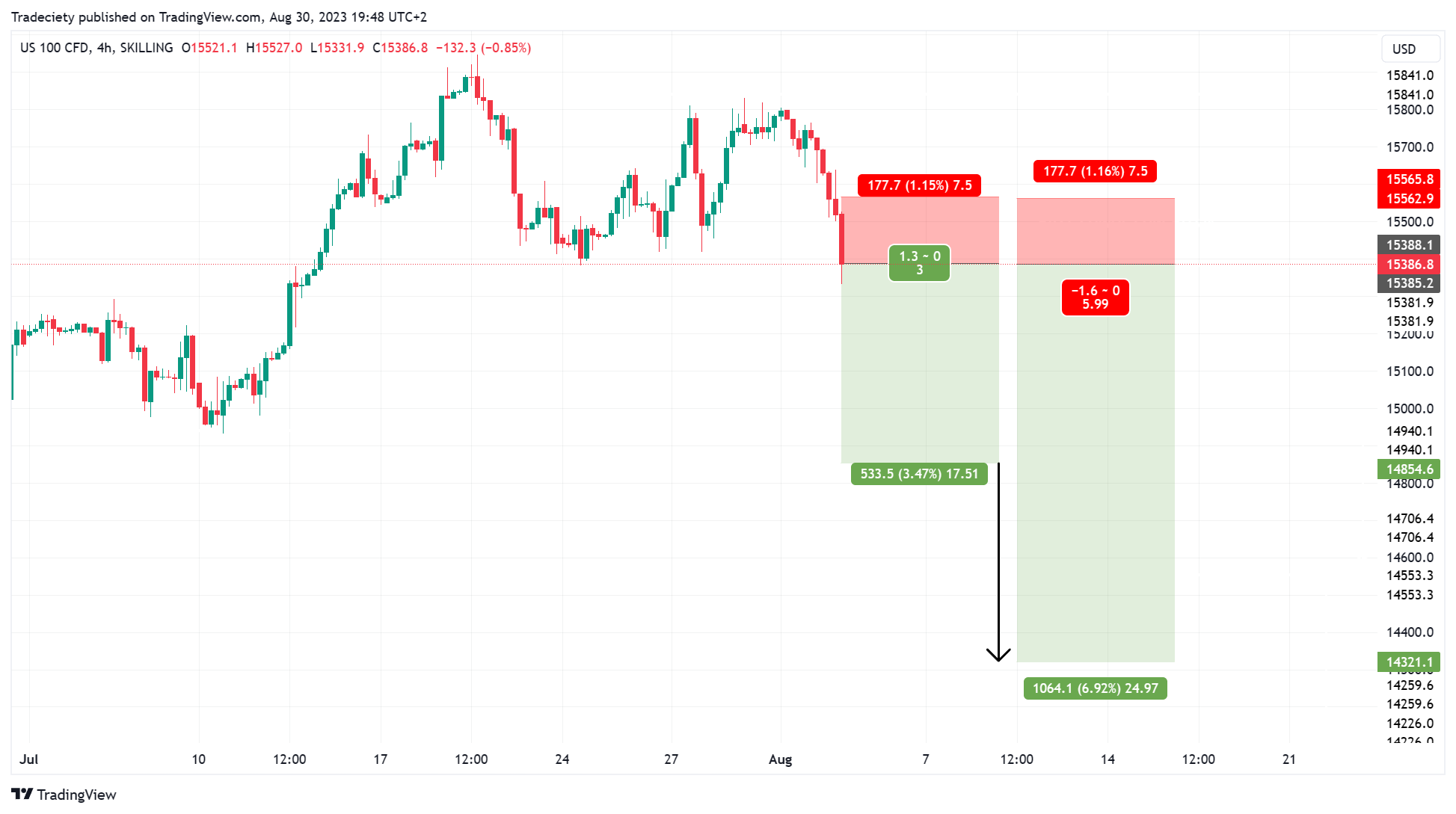
The reward-to-risk ratio (RRR) is among the most important metrics that traders use to evaluate the potential profitability of a trade against its potential loss. Essentially, this ratio quantifies the expected return on a trade in comparison to the level of risk undertaken. Calculated by dividing the potential profit by the potential loss, a high reward-to-risk ratio signifies a more favorable trade opportunity, whereas a low ratio suggests the opposite. But there is so much more to the reward-to-risk ratio as we will explore in this article.
Calculating the reward-to-risk ratio is not complicated. Assuming a trader is evaluating a potential short trade idea (screenshot below) with the current entry price 15387.8, a Stop Loss at price 15565.8, and a Take Profit price 14854.6, getting to the reward-to-risk ratio is very straightforward:
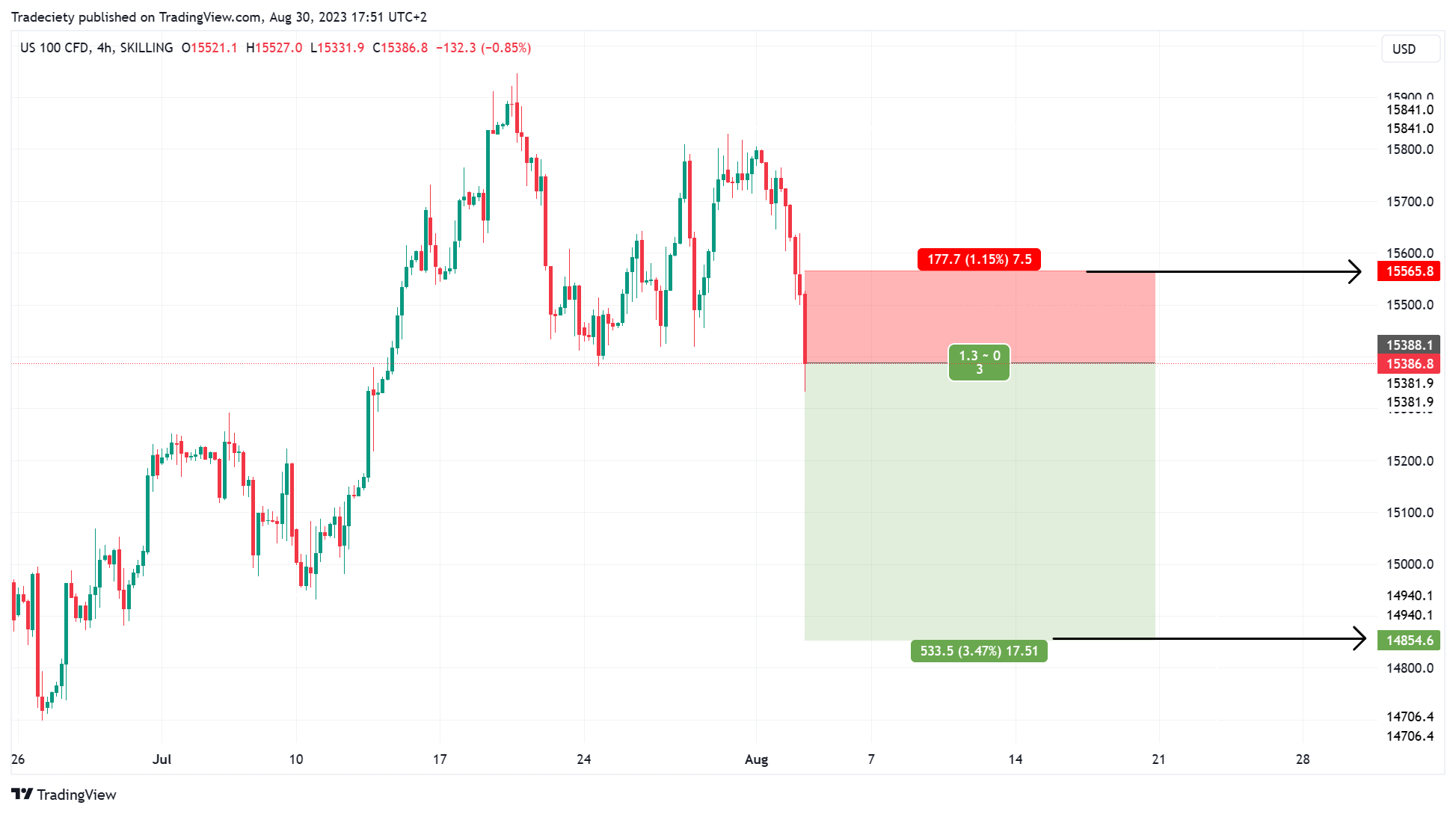
The calculation for a long (buy) trade follows the same logic. If you are using Tradingview, you can also just use their Long / Short Position tool to draw in your reward-to-risk ratio automatically without doing any calculations.
Ideally, a trader measures the reward-to-risk ratio before entering a trade to evaluate its profitability and to verify that the trade offers enough reward-potential. Let´s go over those two aspects to understand them better.
Continuing with our previous trade example and the 3:1 reward-to-risk ratio, we can say that when taking the same trade, with the same premises, repeatedly, we can realize three losing trades and still end up break-even if we can win one out of every four trades:
Trade 1 – Loss: We lose 178 points (total loss 178)
Trade 2 – Loss: We lose 178 points (total loss 356)
Trade 3 – Loss: We lose 178 points (total loss 534)
Trade 4 – Win: We win 533.2 points
Total: +- 0 points
It is, therefore, very important to take trades that have a large enough reward-to-risk ratio. It also highlights the fact that a trader does not have to win all (not even the majority) of their trades in order to make money long-term. If a trader can win two out of four trades with the same 3:1 reward-to-risk ratio, they will net a profit at the end of the day.
Before entering a trade, the trader should analyze the chart situation and evaluate if the trade has enough reward-potential. If, for example, the price would have to go through a very important support or resistance level on its way to the take profit level, the reward potential of the trade might be limited.
Ideally, the trader identifies trading opportunities where the price does not have to travel through major support and resistance barriers in order to reach the target level. The more price “obstacles” are in the way from the entry to the potential target, the higher the chances that the price will bounce along the way and not reach the final target.
I have already hinted that there is a connection between the reward-to-risk ratio and the winrate of a trading system. With a 3:1 reward-to-risk ratio, a trader can lose three out of four trades and still end up with a break-even result and not lose money. This would mean that for a 3:1 reward-to-risk ratio, the minimum required winrate to reach a break-even point is 25%. We get the 25% winrate by dividing 1 by 4 (one winner for every four trades).
Naturally, the higher the reward-to-risk ratio, the lower the required winrate to reach the break-even point. The table below shows the required winrate to reach the break-even point for different reward-to-risk ratio sizes.
|
Reward-to-risk ratio |
Winrate required / Breakeven point |
|
1:1 |
50% |
|
2:1 |
33% |
|
3:1 |
25% |
|
4:1 |
20% |
|
5:1 |
17% |
Now, many traders will assume that by aiming for a high reward-to-risk ratio, it should be easier to make money because you do not need a high winrate. And although this is true in theory, there are some caveats.
In order to achieve a high reward-to-risk ratio, a trader can either set their target levels very far away from the entry price to increase the reward of the trade, or use stop loss orders that are very close to the entry price to reduce the risk part of the trade. Both would provide the trader with a higher reward-to-risk ratio. But what does this mean for the trade and why isn´t bigger also better when it comes to the reward-to-risk ratio?
A wide trade target means that the price action will require more time to reach its target level. Also, the farther away the target is from the entry, the lower the likelihood that the price will be able to make it all the way. The wider the target, the lower the chances of the price realizing the full winner. Wide targets, therefore, are harder to reach and typically result in a lower potential winrate.
The screenshot below illustrates this dynamic between the reward-to-risk ratio and the take profit. By doubling the take profit distance, the reward-to-risk ratio doubles to 6:1. But taking a look at the new trade outlook it becomes apparent that the time in the trade will increase with it and the trade now has a higher chance of not making it all the way.
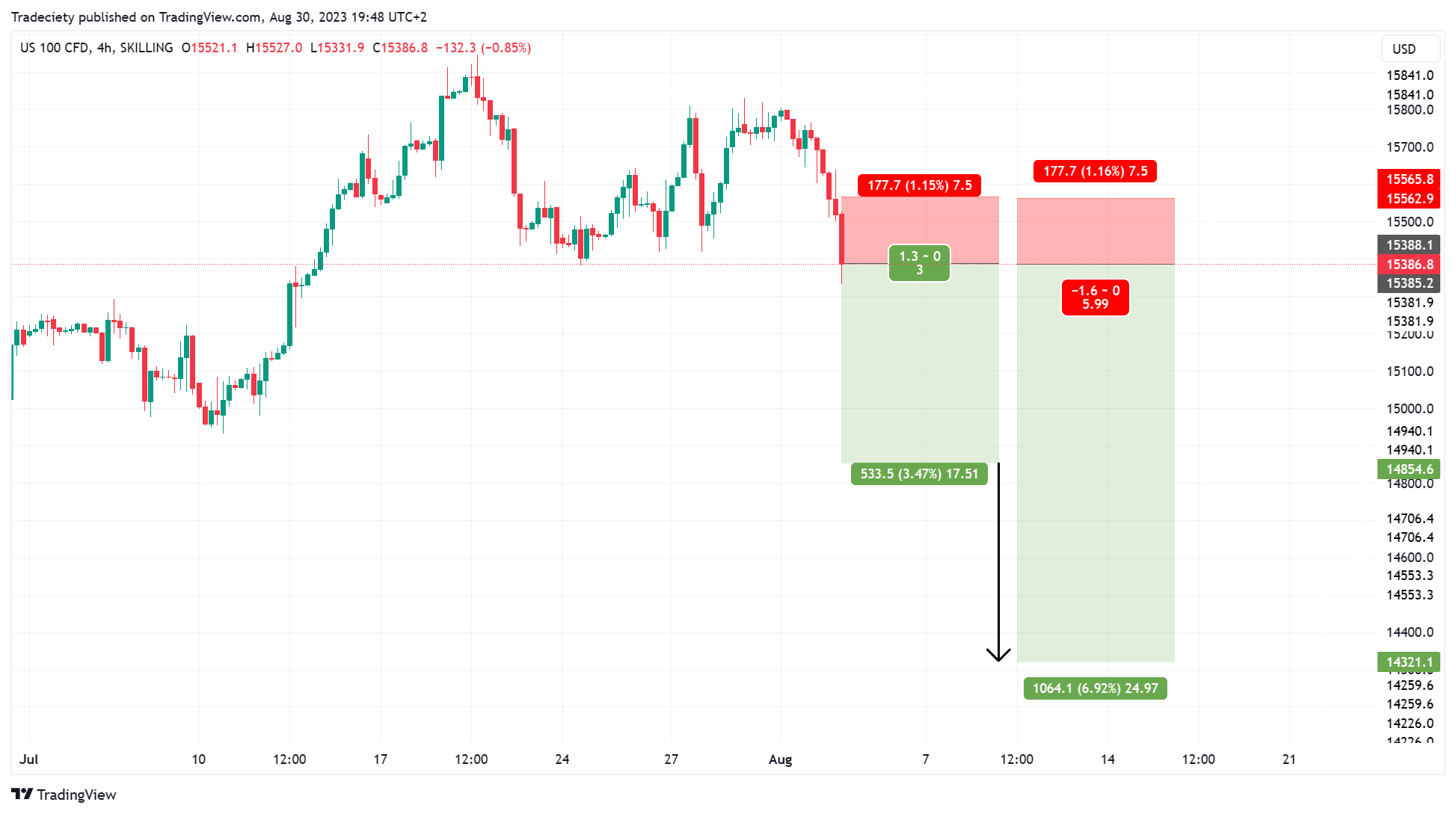
On the other hand, a closer stop loss means that it will be easier for the price to hit the stop loss. Even small price movements and low volatility levels can be enough to kick out traders from their trades when they utilize a closer stop loss order. The closer the stop loss, the lower the winrate because it is easier for the price to reach the stop loss.
In the screenshot below, the stop loss distance was halved and with it, the reward-to-risk ratio doubles to 6:1. And although the reward-to-risk ratio is significantly higher, the price will have a much easier time reaching the stop loss and ending the trade.
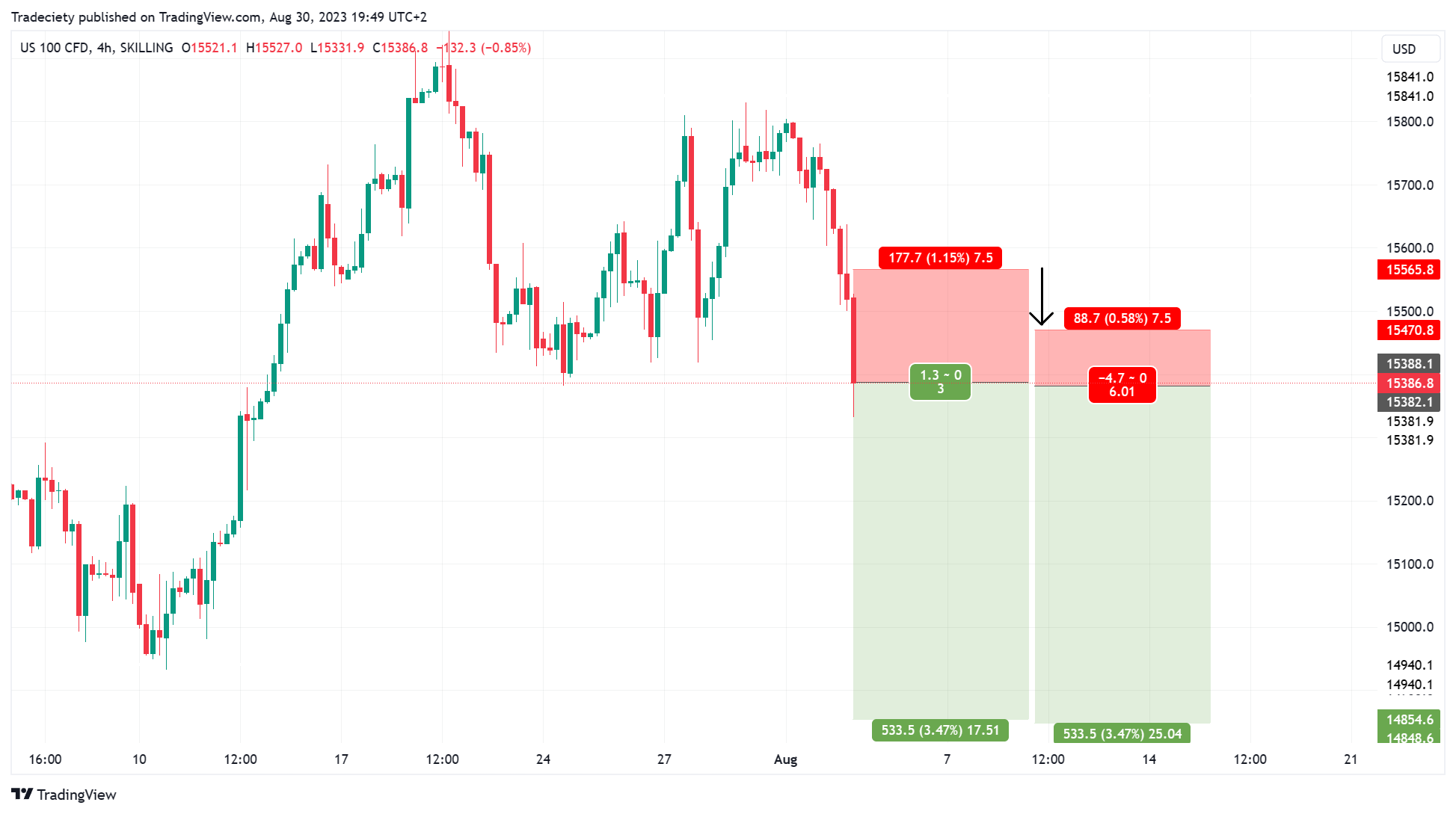
Understanding this natural relationship between stop loss and take profit distances can help traders make better decisions and improve their risk management. Many aspiring traders are not aware of how modifying their stop loss or take profit orders can impact their trading performance and completely change the outlook of their trades.
Inevitably, the question of the optimal reward-to-risk ratio then comes up. Unfortunately, there is no one-size-fits-all answer.
Many new traders gravitate towards a trend-following approach which typically requires a large reward-to-risk ratio which can be hard to pull off because, as we have learned, the higher the reward-to-risk ratio, the lower the winrate is usually going to be. Also, the time in the trade will increase. Both factors make it harder for inexperienced traders to realize good trades.
This could also explain why so many new traders are struggling with their trading performance. Staying in winning trades for an extended period is often challenging for new traders and many traders will, therefore, cut their winners short, reducing their profit potential and missing out on a lot of profits.
In the beginning, we would recommend going for a lower reward-to-risk ratio. This generally leads to a higher winrate and allows traders to build their confidence faster due to a higher winrate.
When you read trading books or listen to interviews with successful traders, you will notice that the majority (if not all) talk extensively about the reward-to-risk ratio and how managing their risk is a vital part of their trading success. Below, we have selected a handful of trading quotes from the best traders, explaining their view of the reward-to-risk ratio.
“You should always be able to find something where you can skew the reward-risk relationship so greatly in your favor that you can take a variety of small investments with great reward-risk opportunities that should give you minimum drawdown pain and maximum upside opportunities.” – Paul Tudor Jones
“It’s not whether you’re right or wrong that’s important, but how much money you make when you’re right and how much you lose when you’re wrong.” – George Soros
“Frankly, I don’t see markets; I see risks, rewards, and money.” – Larry Hite
“It is essential to wait for trades with a good risk-reward ratio. Patience is a virtue for a trader.” – Alexander Elder
“Paul Tudor Jones [had a principle he used to use] called 5:1. […] he knows he’s going to be wrong [sometimes] so if he loses a dollar and has to spend another dollar, spending two to make five, he’s still up $3. He can be wrong four out of five times and still be in great shape.” – Anthony Robbins on Paul Tudor Jones
“The most important thing is money management, money management, money management. Anybody who is successful will tell you the same thing.” – Marty Schwartz
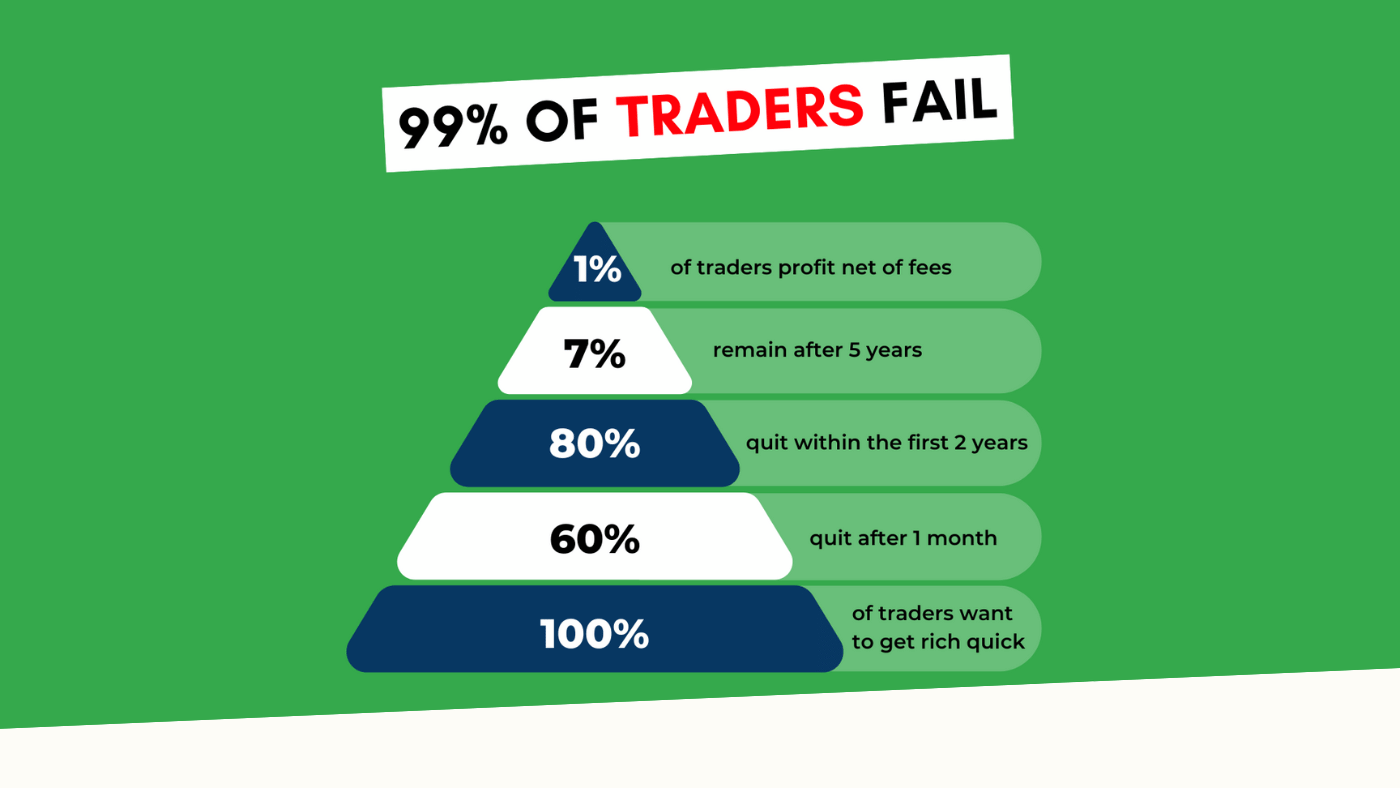
3 min read
“95% of all traders fail” is the most commonly used trading related statistic around the internet. But no research paper exists that proves this...
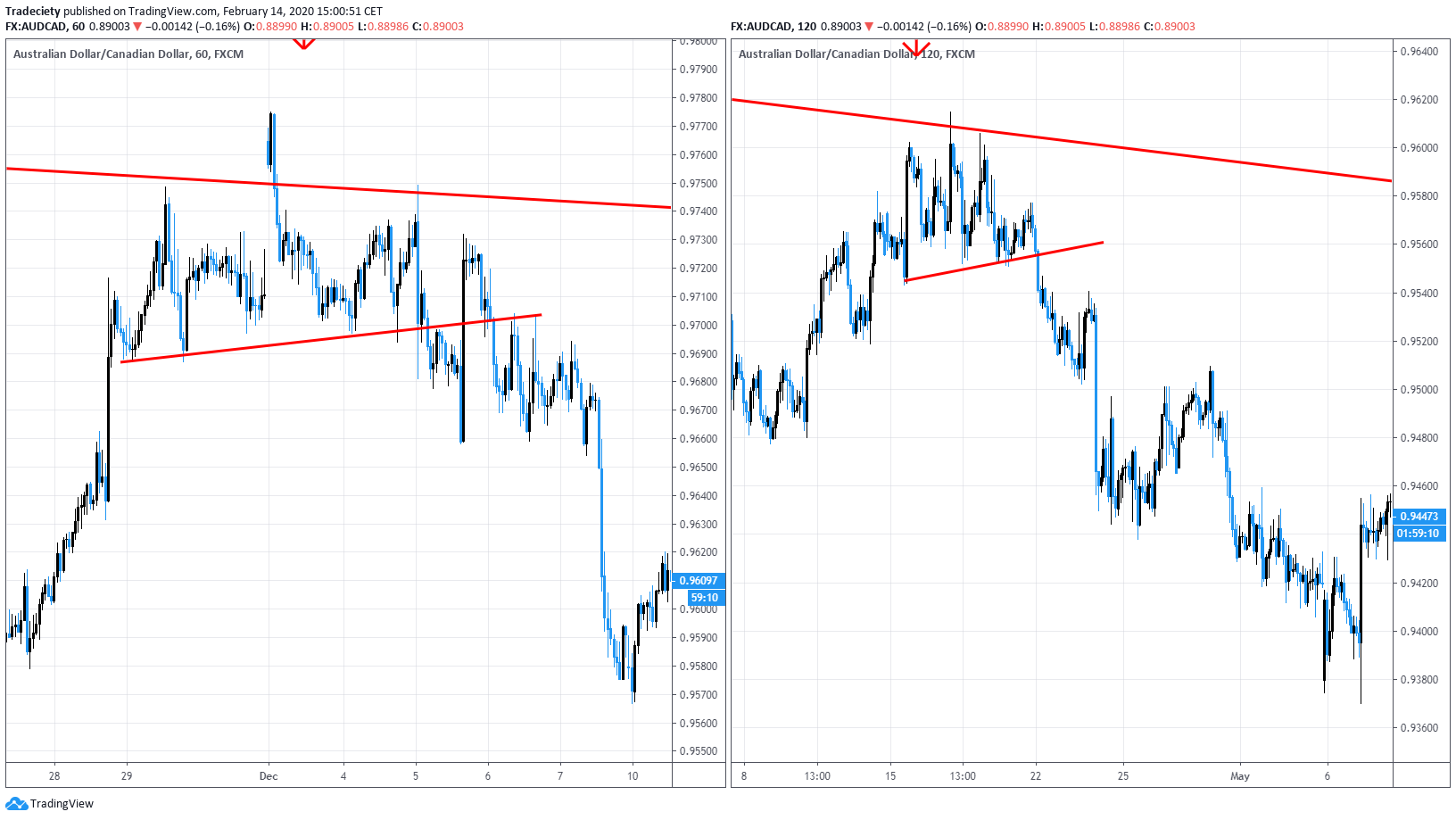
3 min read
Trendlines can be great trading tools if used correctly and in this post, I am going to share three powerful trendline strategies with you.
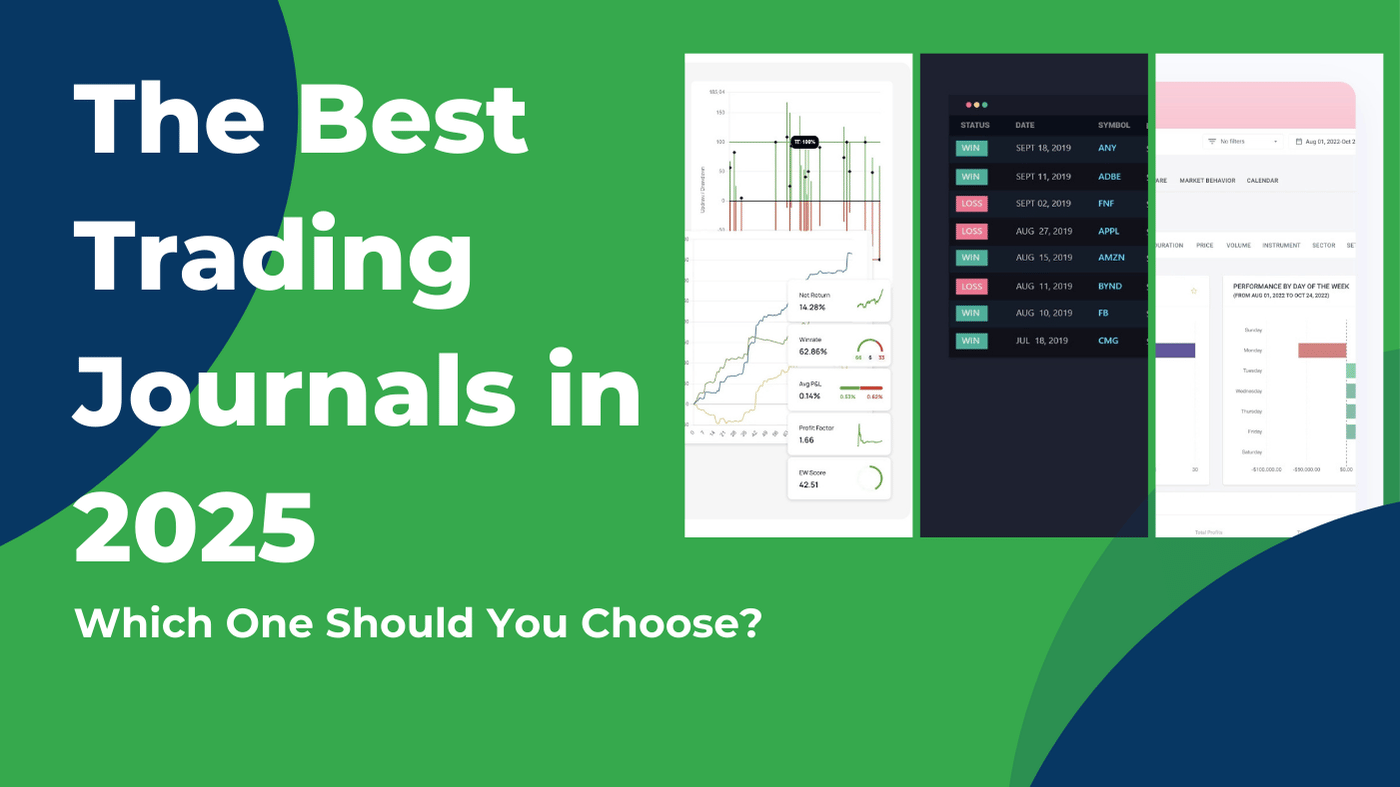
3 min read
Choosing the right trading journal is essential for traders wanting to analyze performance, refine strategies, and improve consistency. In this...